Ah, the middle of the year. A time of sunshine, picnics, and… sales lulls?
Yes, unfortunately for many businesses, this time of year can bring a dip in sales as people jet off to the beach or save for back-to-school season.
But fear not, my entrepreneurial friends, for there is a solution that doesn't involve hiring a skywriter to advertise your business to passing planes. Instead, focus on increasing your average order value. And you know what one great strategy for doing so is? Decoy pricing.
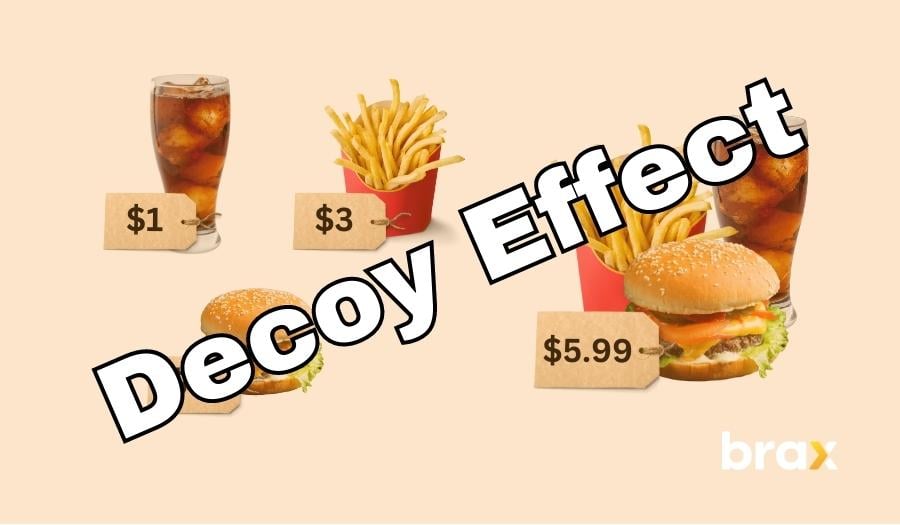
But what is it exactly, and how can it help you? And are there any ethical concerns to adjusting your price not based on value but as a strategy? We'll discuss all of these so that you can have a successful, ethical business.
What is Decoy Pricing?
Decoy pricing is a strategy where businesses use the relative perception of prices to influence customers' purchasing decisions. This means strategically positioning your products in such a way that consumers perceive one option as more attractive than the rest.
One of the primary ways decoy pricing helps businesses is by capitalizing on the human tendency to compare and evaluate options relative to one another. When presented with multiple choices, individuals tend to gravitate towards the option that offers the best-perceived value.
It can make a more expensive item look like it's a good deal, but it can also make a less expensive item look like the best option. How is it possible to do both?
It's because you create a "decoy" — a price and offer that you don't really want to offer potential customers. It is simply placed there to help the user choose the offer you want them to. While all the offers should always be available, you do not remove the least-liked options because they help push the user into making a decision.
It's like when you're at the movie theater, and you want to get some popcorn. All you really can consume is the small one, but you see that the price of a small popcorn is $5 (weighing 200 grams), a medium is $7 (weighing 400 grams), and a large one is $10 (weighing 500 grams).
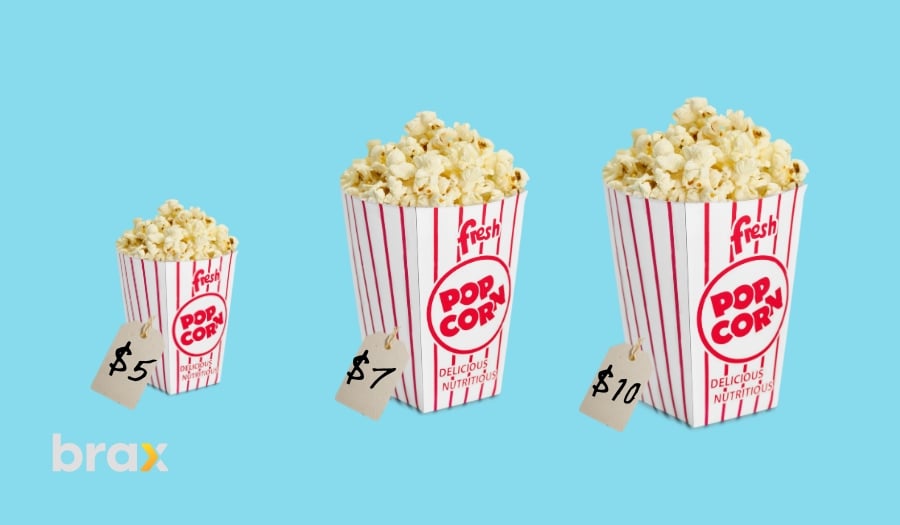
You may have originally intended to get a small one because you believe that's all you can eat, but suddenly that medium option looks way more appealing as it gives you twice the amount of popcorn for less than half the price increase.
Plus, the large one is double the price of the small one, but its size/weight difference from the medium one is pretty small.
What happens? You end up buying the medium one!
Is it mind control? Not really. But it feeds off the idea that you feel you are getting more for your money, even when the value of the popcorn was just arbitrary, and the information you have was based on what they said!
How Decoy Pricing Works
The decoy pricing strategy is not magic, nor does it make use of any type of hypnotism. It only utilizes something that matters more to businesses — the emotional aspect of making a purchase!
There are actually two main reasons why pricing affects a buyer's decision-making process:
Consumer Perception
What consumers perceive of a product can have a big impact on whether or not they buy it. If a customer perceives that a product is high quality, reasonably priced, or solves a problem they have, they will be more likely to make the purchase.
But what happens when companies offer three pricing options:
- the top option, which is the most expensive but with the extra features,
- the middle option, which is in the middle range but has all the relevant features,
- the cheapest option, which has the least features but is still functional.
Deciding is simple — the middle one seems to have the best value.
Let's take a look at this e-commerce platform's revamped marketing and pricing strategies as an example:
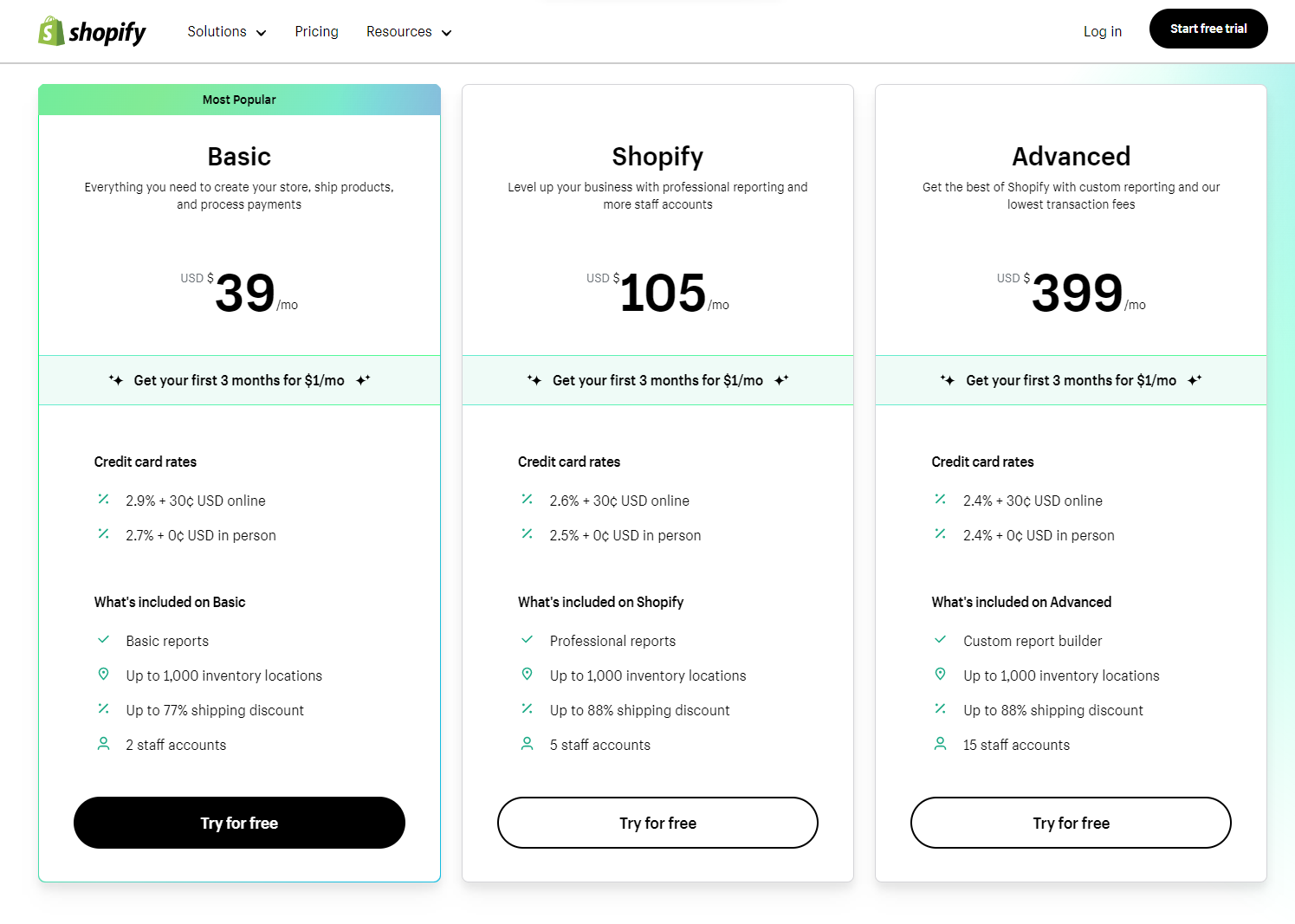
It has three pricing plans, the lowest of which is $39. Now you can definitely find other e-commerce platforms for less than $39 per month, right?
But then you look at the second option (Basic plan), and you think to yourself, wow, that's even more expensive.
Then you see the Advanced price, and you realize that it's ten times more than the Basic Plan! Instinct tells you to avoid that, so you go back to the first two options.
This time around, though, the Basic Plan doesn't look too bad. You stop comparing it to external choices and compare the offerings of the different plans instead.
You may even look at the Standard Plan and compare it to the most expensive plan and somehow "prove" to yourself that the Standard Plan is better among the two as the difference between features is not that big, but the price difference is stark. This is the decoy effect.
Whichever you choose between the two, though, is a win-win for the platform because you actually take the next step and subscribe with them.
Brand Image
When it comes to making a purchase, customers are not solely driven by the quality of the product they're interested in — they're also influenced by the brand that offers it.
The brand image can make or break a sale. It's a subtle yet crucial factor that cannot be overstated. A positive brand image can evoke a sense of trust and admiration, while a negative one can trigger skepticism and dismissiveness. But what if there's a twist? Enter decoy pricing method.
It's like telling the customer, "Hey, here's something you don't really want, but look how cheap it is. Now, doesn't the original (more expensive) option look more enticing?"
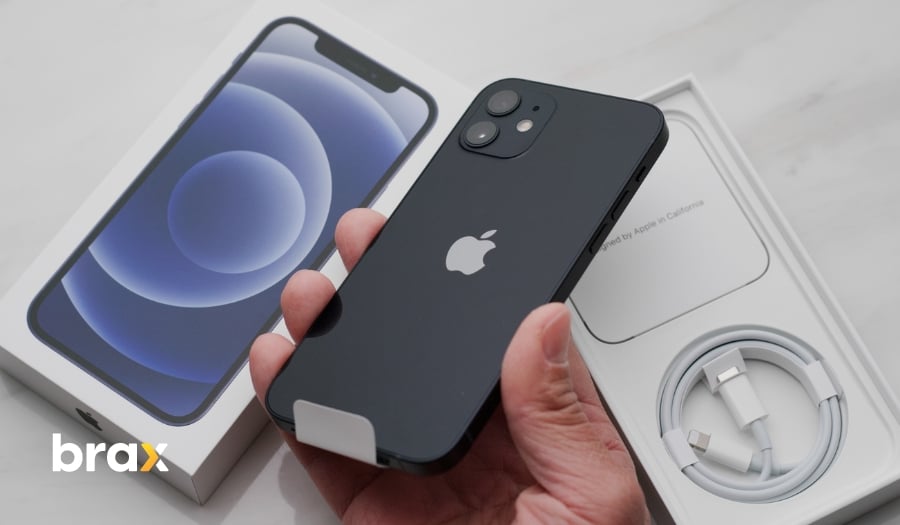
Decoy pricing can manipulate customer behavior, even if it doesn't add any real value to their purchase.
How Decoy Pricing is Used in Businesses
We've mentioned that Decoy Pricing is used to convince the user to buy either the cheaper or the more expensive option. Here's how that's done.
For the Cheaper Option to be Chosen
Let's have a story as an example. This one has been circulating in social media for years now, and while I find it funny, it rings true when it comes to Decoy Pricing.
An old man had a stall that sold watermelons.
His price board says 1 for $3 and 3 for $10.

One man stops, reads the sign, and asks for one watermelon.
After paying for it for $3, he goes ahead and asks the old man for another. He pays for it again and asked for a third watermelon.
The man shook his head while sporting a grin on his face.
"I've just bought three watermelons from you for the price of $9!" he said. "Maybe business is not your thing!"
As the man walked away, the old man smiled to himself.
"People are funny. They always buy three watermelons instead of just getting one, but they still try to teach me how to do business!"
Was it the product that caused the person to buy more? Not really! It was the price. That is how big of an impact proper pricing has on your sales. And Decoy Pricing can even prompt them to choose the option you prefer.
For the Expensive Option to be Chosen
By offering a third option that is purposefully less appealing than the highest-priced product but more appealing than the cheapest choice, decoy pricing entices customers to choose the pricier option.
This technique ultimately generates more revenue for businesses, as customers are more likely to choose the more expensive option, which becomes the "better deal" when compared to the less attractive but cheaper option.
This is also good for offering bundled products.
One of the best examples of this is your meal options in fast food chains.
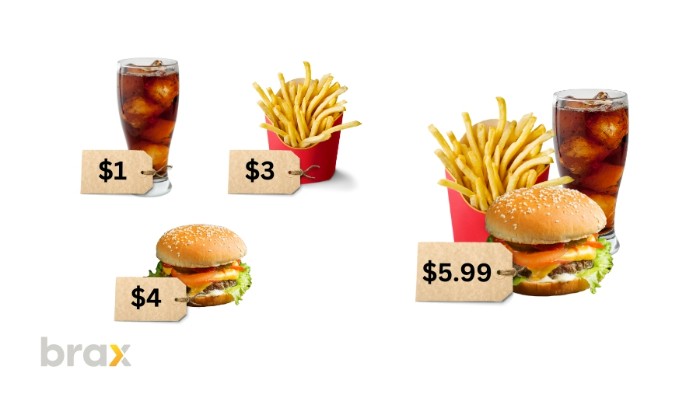
If you buy the items individually, they amount to a total of $8. If you buy the whole bundle for $5.99, you say a little more than $2, right?
Among the options above, the most expensive choice is the bundle, but since you are getting all the items for cheaper or for a better deal, chances are you'll choose that option.
Advantages of Decoy Pricing
We know that your pricing has an effect on how a customer interacts with your products or brand, but what are the benefits of applying the Decoy Pricing strategy? Here are some:
Increasing Average Earnings per Customer
By introducing a decoy, marketers can create a compelling contrast that makes the target product seem like an irresistible deal. As a result, customers are more likely to choose the higher-margin items, ultimately boosting the company's Average Order Value (AOV).
This tactic can also help businesses upsell their products or services by subtly nudging consumers towards premium offerings, further maximizing profitability.
People end up spending more than they would have without the decoy, and the average earnings per customer shoot up.
Increased Customer Retention
Decoy pricing isn't just a sneaky way to boost earnings — it can also help keep customers coming back for more.
By making people feel like they're scoring an amazing deal, businesses can create a positive shopping experience that customers will want to repeat. And let's be honest, who doesn't love feeling like they've snagged a bargain?
Here's the scoop: when customers see the decoy option, they're more likely to choose the better-value product, which in turn makes them feel smart and satisfied with their decision. This sense of satisfaction can lead to increased brand loyalty, as customers associate the company with great value and a keen eye for their needs.
And when people have a strong connection with a brand, they're more likely to stick around and keep coming back for more.
Balancing Ethics and Business Objectives
As with any powerful marketing tool, it is crucial for businesses to balance their financial objectives with ethical considerations to maintain customer trust and long-term relationships.
Ethical concerns surrounding decoy pricing primarily revolve around the manipulation of consumer decision-making. By exploiting psychological biases, the decoy pricing strategy can influence customers to choose higher-priced items, which may not align with their actual needs or preferences.
This raises questions about the transparency and honesty of the pricing structures, as they may create a false sense of value for the consumer.
Moreover, vulnerable customer segments, such as price-sensitive or uninformed consumers, may be disproportionately affected, potentially encouraging unnecessary spending.
While we want to earn more, we don't want to act like magicians pulling a sleight-of-hand trick!
To balance ethics and business objectives when implementing decoy pricing, businesses must consider several key factors.
-
Be Transparent
Transparency is key! Clear communication of product features and benefits is essential to ensure customers can make informed decisions based on accurate information.
If you believe the price you are setting up is the right price, prove it by showing your customers the value of what you are offering.
Take a look at this pricing structure by Entrepreneur Magazine:
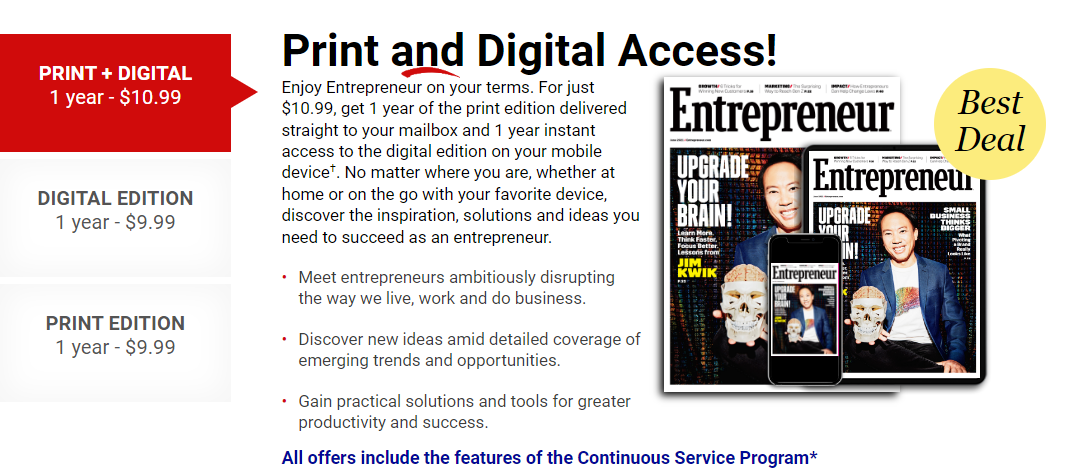
It's obvious that Entrepreneur wants you to get the Print and Digital Edition, instead of just either the printed-only version or the digital-only version based on the price of the two.
However, what's great about Entrepreneur is that although they use Decoy Pricing, they are transparent about what each of these plans offers.
-
Don't make the price difference too disproportionate
While using the decoy pricing strategy can be effective in enticing customers to make a purchase, it's crucial to avoid excessive price disparity between the decoy and target options to help prevent the perception of manipulation.
Think of it like Goldilocks and the Three Bears: you don't want your pricing to be too hot (outrageous), too cold (too little difference), but just right (the ideal difference between products).
-
Build a Good Customer Relationship
Additionally, fostering trust and long-term relationships with customers should be a priority.
This can be achieved by prioritizing customer satisfaction and focusing on providing genuine value through products and services.
-
Aim for Sustainable Growth
Implementing ethical marketing practices will enhance brand loyalty and contribute to a positive brand image, further benefiting the company in the long run.
In a Nutshell
Decoy pricing can work wonders for customer retention by creating a positive and rewarding shopping experience. By strategically placing a less attractive option in the mix, businesses can encourage customers to choose higher-value items, making them feel like savvy shoppers and true winners.
And when customers feel good about their purchases, they're more likely to stay loyal and keep coming back for more of that sweet, sweet value.
However, with great power comes great responsibility. Companies can successfully utilize this pricing strategy without compromising their ethical standards by maintaining transparency, prioritizing customer satisfaction, and adopting ethical marketing practices.
Ultimately, striking the right balance between business goals and ethical considerations will lead to sustainable growth and a strong, loyal customer base.

